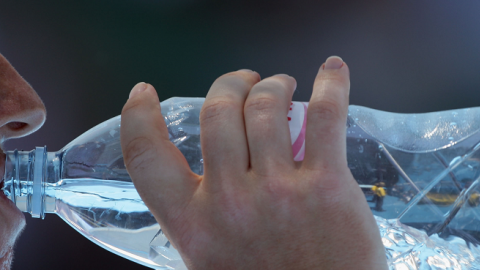Polarizing issues like climate change, genetically modified foods, and gun control have been causing activists and industries to lock horns while the public suffers. Americans have gotten used to—if not jaded by— such bipolar stalemates on almost every issue of importance. But a promising new prototype has emerged for those who are thirsty for solutions: the Partnership for a Healthier America’s “Drink Up” campaign, which aims to curb obesity by promoting water as the drink of choice.
Every industry that’s under attack should find Drink Up worth looking at. So should its attackers. In fact, I believe the campaign is a model for every industry, for one simple reason: It’s working. Its success to date should show anti-industry activists that working with businesses that are tied to a social issue can be far more powerful than attacking them—if (and only if) the industry can be shown that there are profits in doing the socially responsible thing. Companies will gladly lend their considerable marketing and distribution channels to social causes when they are also good for business.
I’ve written about Drink Up before, mainly to chide the hyperactivists who pilloried First Lady Michelle Obama for being part of it. Some purists don’t like the fact that beverage companies might make some money from increased sales of bottled water. Others have complained that the Drink Up should push tap water over bottled water, or it should also tell people to eschew soda and other sugary drinks.
The numbers prove that Drink Up works, and the numbers should quiet the critics.
Following a campaign that featured two public service announcements seen 700 million times over a 15-week period throughout the U.S.—in 15,000 stores, doctors’ offices, gas stations, malls, and other highly-trafficked places—newly released data demonstrates that Drink Up is encouraging consumers to embrace water’s benefits. The Natural Marketing Institute reports from its survey of 40,000 consumers that the number of eight-ounce servings of plain water drunk per day from all sources (bottled, tap, filtered) was up 2.7% for the quarter ending March 31, 2014, compared with the fall quarter of 2013, when the campaign was launched. Restaurant data reported by NPD Group tells a similar story: Tap water servings rose 3% in the quarter ending Dec. 31, 2013, compared with a 1% gain for the entire year. This comes during a time when more restaurants in drought-prone areas such as California are offering tap water only if patrons ask for it.
Drink Up’s partner companies are also benefiting. For instance, Nielsen reported that Nestle Pure Life bottled water volume sales rose more than 20% in the period ending March 22, 2014, when it participated in the Drink Up campaign. In contrast, U.S. store sales of soda were down nearly 2% in dollar terms, according to Citi Research, for the period ending March 15, 2014.
Why is Drink Up’s strategy working? Simply because public health advocates and beverage companies—which have squared off in the past and will no doubt do so in the future—saw that engaging with each other in a very different way made sense in this case. The campaign’s beverage company partners, including Coca-Cola, Nestle, and PepsiCo, saw the profit potential from increased interest in bottled water. Public health advocates realized they needed the beverage companies’ extensive marketing power, financial resources, and distribution channels. Neither side sold out to the other. To put it baldly, they exploited each other to get what they both wanted. And that’s not such a bad thing, if the public benefits or a big problem gets solved.
This type of collaboration between activists and industry is a radical change from past practices of demonizing the other side or pushing for restrictive legislation or taxes. It’s far more constructive and far less costly. But it requires a huge shift in mindset. Activists and industry must stop the eyeball-rolling, listen to each other, and find opportunities where both sides can benefit. And they must realize that solving even a deeply polarizing problem doesn’t require having a winner and a loser.
Both sides must be willing to put themselves on the line. For companies, this means committing money and marketing muscle. Activists must to be willing to lend their credibility and passion to the effort, and to trust industry do the heavy lifting on behalf of a solution.
The process of engagement won’t look like a Kumbaya moment, with grand statements followed by total inaction. Washington is filled with these dog-and-pony shows. Instead, each side must be specific about the results it wants to achieve and committed to measuring whether progress is being made. In Drink Up’s case, public health advocates hoped for increased water consumption; the beverage industry hoped for increased water sales. Drink Up hired credible research organizations such as Nielsen to gauge whether its messages were having an effect on sales and consumption. Only hard numbers can help both sides move beyond fiery rhetoric toward workable solutions that really move the needle and benefit the public.
Finally, engaging on an issue doesn’t guarantee that the two sides won’t ever squabble again. The First Lady has taken criticism for being too cozy with the food and beverage industry, though she continues to push for new restrictions on “junk food” marketing at schools. Activists will continue to push for changes that benefit the public; industries will continue to look for ways to make money. This will put them at odds sometimes, but if they can look for opportunities for shared benefit, they will be at odds less often.
The Drink Up campaign is a template for how advocates and industries can engage with each other to tackle social and public health problems. Never has the need been more urgent for new strategies to break the logjam of opposing ideas. The public can only benefit when opposing parties find areas where both sides can win.
















